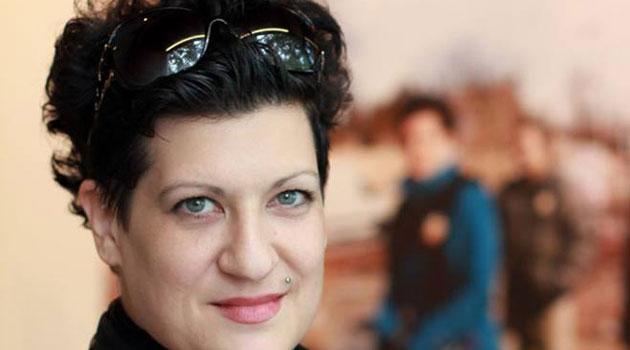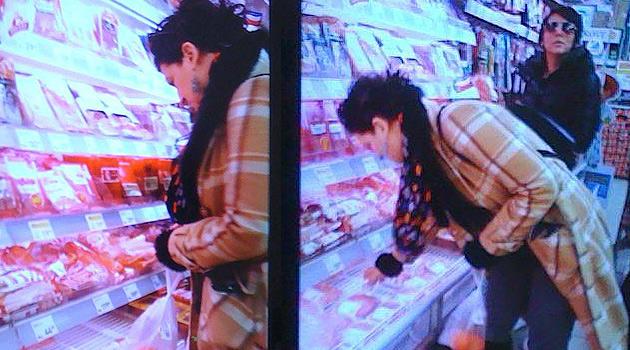Since January 2017 news server Romea.cz has been regularly publishing interviews with people who do interesting things that aid coexistence in the Czech Republic. The series is called “Together We Can” after the motto of this year’s International Romani Day celebrations.
Interview with Tamara Moyzes
This graduate of the Academy of Fine Arts (AVU) is dedicated to activism and art. On 13 November she opened an exhibition entitled “The Ministry of Education Warns You: Segregation Harms You and Those Around You, Volume II” at the AVU Gallery in Prague; a discussion was held with all of the artists involved there on 14 November.
Q: What, in your view, is it necessary to do for us to live together well here? What do you do?
A: I am an activist and an artist, I call it being an artivist. I found this path for myself. Naturally, this path does not have to be for everybody, but for me, the path is art, activist-artist actions in public spaces and in galleries. I do my best to reference the common journey we are on and to use the media. This is how I address various causes that inspire me and that I have a feeling should be addressed, ones that are unjust. Most of my subject matter is against oppression and xenophobia generally. One of the most important themes is the Romani topic, which I have focused on since 2006 when I began to collaborate with David Tišer and Věrka Duždová. In 2014 we put together a group called “Romane Kale Panthera“, which basically continues to expand. The entire idea of the group is to bring together non-Romani and Romani activists, artists and intellectuals and to hold actions in galleries and in public spaces that refer to matters that do not seem right to us. Naturally this group, or its name, which means “Romani Black Panthers”, comes from the African-American movement of the 1970s. We are an art group, we engage in combat with the aid of art. The entire idea arose when the anti-Romani marches began here and we traveled frequently to Duchcov and Varnsdorf in those days, as well as to other places where we met Romani activists who were assimilated, who lived with gadje [non-Roma] and who were dealing with their Romani identity. The anti-Romani marches forced those people to decide which side they were on, and many of them then became activists. On the basis of that inspiration, we felt it necessary to create an artists’ group to address this issue. It’s an open group, and whenever we do an action, more people join us. For the opening of this exhibition we did a performance that everybody participated in. I am glad this is happening, the original idea was that anybody can be a Romane Kale Panthera.
Q: How did you come to all of this?
A: I think it is rather complicated to describe, even for me. On the one hand, I was born in Slovakia into a Hungarian-Jewish family, so my parents married each other as members of different minorities. I was raised with this, I already had a strong feeling, just like my parents, that it is necessary to combat racial hatred. My parents were each from a different culture and had to address their own cultural differences and tolerate each other. My mother was a philosopher, my father was a photographer, and he was one of the first to go to the Romani settlements together with Tibor Husár to photograph them. They exhibited on Romani subject matter. I, as a child, grew up in his darkroom. I saw there how the photos from the settlement slowly appeared when he developed them. I just realized that last year, I have had it stored in my subconscious this entire time. In addition, the sister of my father’s mother was living in Bratislava, and when I was a young child, she told me that on that side of the family I also have a Romani branch. At that time I was mainly addressing my Hungarian-Jewish identity. However, at that time I was also living with the idea that there was a Romani identity as well. I never dealt with it, though, I never discussed it with my parents. The feeling alone was enough. I have always been different, always looked different, ever since childhood people have asked me “what” I am. As a child I experienced bullying because I am Jewish. When I was nine, all of my fellow pupils wanted to put a Jewish star on me, which was extremely traumatizing. I was grappling with several cultures on my own. I cannot say I am 100 % “something”, although I am 100 % a human being, and the theme of my life is finding mutual comprehension among minorities. I am very dedicated to the queer community also, although I myself am heterosexual. I came to the queer commuinty from feminism. I have an exaggerated sensitivity to minorities because they experience the same feeling that I personally share, and that may also be determined by the fact that I am a woman. We women are not a minority – allegedly there are even more of us than there are men – but as far as rights in society go, e.g., to the same pay, women to this day do not enjoy those rights. I have also experienced this as a woman artist in the male world of art. When they accepted me to art school, they asked me whether I was aware that I was taking a place away from a male artist because as a woman, I would eventually be closed up somewhere cooking for everybody my entire life.
Q: I would like to ask you the same question I have asked all our other interviewees, and that is how you perceive these terms – “Czech”, “non-Rom”, “Rom” -that we so frequently use?
A: I am bothered when Romani people call themselves “Gypsies” (Cigáni). In Romanes the word “Rom” is clear, and the word “gypsy” (cikán) has been artificially created and then misused since the era of the Second World War. However, recently I am also bothered by political correctness, which I previously fought for a great deal. Now it seems to me to just be a cliché beneath which a great deal of aggressivity is frequently hiding. A few incorrect jokes can also be fine sometimes. As for the term “gadjo“, in Hebrew you have the same word, “goy“, for non-Jews – it’s the same. I have a problem with those concepts because they are pejorative. I am a brutal democrat, so if I use these words, it is just to be sarcastic. However, I have a problem with that too, because I am probably overly in favor of us all living together nicely.
Q: Do you have any dreams? If you had a magic wand, what would you conjure up?
A: Romanistan [laughs]. That idea arose in the 1930s. When we talk about the Romani minority, I believe the result of a Romanistan would greatly aid Romani identity and self-awareness, mainly. Basically it would also assist the majority society with appreciating Romani people if there were to be a Romanistan. From my own experience of Israel, I know that this is problematic and is frequently connected with occupation activities, but I believe it has been an important process for the Jewish nation to have a state. That applies even if I criticize Israeli policies. We Jews fought for a state after the Second World War. The Romani people are still fighting today for recognition of the catastrophes and murder that befell them at that time.

